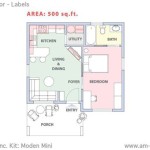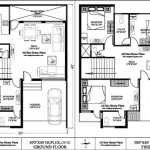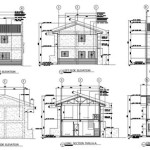Slab On Grade House Plans: Essential Considerations for Building on a Concrete Foundation
When designing and building a house, selecting the right foundation is crucial for its longevity and stability. For homes built on relatively flat and well-drained sites, a slab-on-grade foundation is often an ideal option. Slab-on-grade house plans utilize reinforced concrete poured directly onto the prepared ground, creating a solid and durable base for the structure.
Advantages of Slab On Grade Construction
Slab-on-grade foundations offer several advantages:
- Cost-effectiveness: Compared to other foundation types, slab-on-grade is typically less expensive to construct.
- Speed: Concrete can be poured and cured in a relatively short amount of time, reducing construction timelines.
- Durability: Properly reinforced concrete slabs are exceptionally durable and can withstand significant loads.
- Energy efficiency: Concrete's thermal mass helps regulate indoor temperatures, reducing energy consumption.
Essential Aspects of Slab On Grade House Plans
To ensure the success of a slab-on-grade home, several critical factors must be considered in the design and construction:
1. Soil Preparation
The ground beneath the slab must be adequately prepared to ensure proper drainage and support. This involves excavating the area, leveling it, and compacting the soil.
2. Vapor Barrier
To prevent moisture and gases from rising from the ground into the living space, a vapor barrier is installed beneath the concrete slab. This typically consists of a polyethylene sheet.
3. Insulation
Insulation is applied on top of the vapor barrier to minimize heat loss and create a more comfortable indoor environment. Common insulation materials include extruded polystyrene foam (XPS) and rigid insulation panels.
4. Reinforcement
To enhance the strength and rigidity of the slab, steel reinforcing bars (rebar) are embedded in the concrete. The rebar is positioned according to the engineered design to resist tensile and compressive forces.
5. Concrete Mix and Pouring
The concrete mix used for slab-on-grade construction is typically a high-strength, low-shrinkage concrete blend. It is carefully poured over the prepared base and leveled using a screed.
6. Curing
After pouring, the concrete must be allowed to cure properly. This involves maintaining the proper moisture and temperature levels to allow the concrete to reach its full strength.
7. Expansion Joints
Concrete naturally expands and contracts with temperature changes. To prevent cracking, expansion joints are installed at regular intervals to accommodate these movements.
Conclusion
Slab-on-grade house plans offer a cost-effective, durable, and energy-efficient foundation solution for homes built on suitable sites. By carefully considering the essential aspects discussed above, homeowners and builders can create a solid and sustainable foundation for their dream homes.

Slab On Grade Home Plans By Tjb Homes

Slab Foundation House Plans Floor Drummond

Pin On Plan Ideas

House Plans With Slab Foundation

Slab Foundation House Plans Floor Drummond

Pin On Fish N Game

Foundation Plans How To Choose The Right One Houseplans Blog Com

House Plan 50651 Ranch Style With 1779 Sq Ft 3 Bed 2 Bath 1

Foundation Plans How To Choose The Right One Houseplans Blog Com

Floor Plans Gulf Breeze Fl Pettinato Construction Inc








